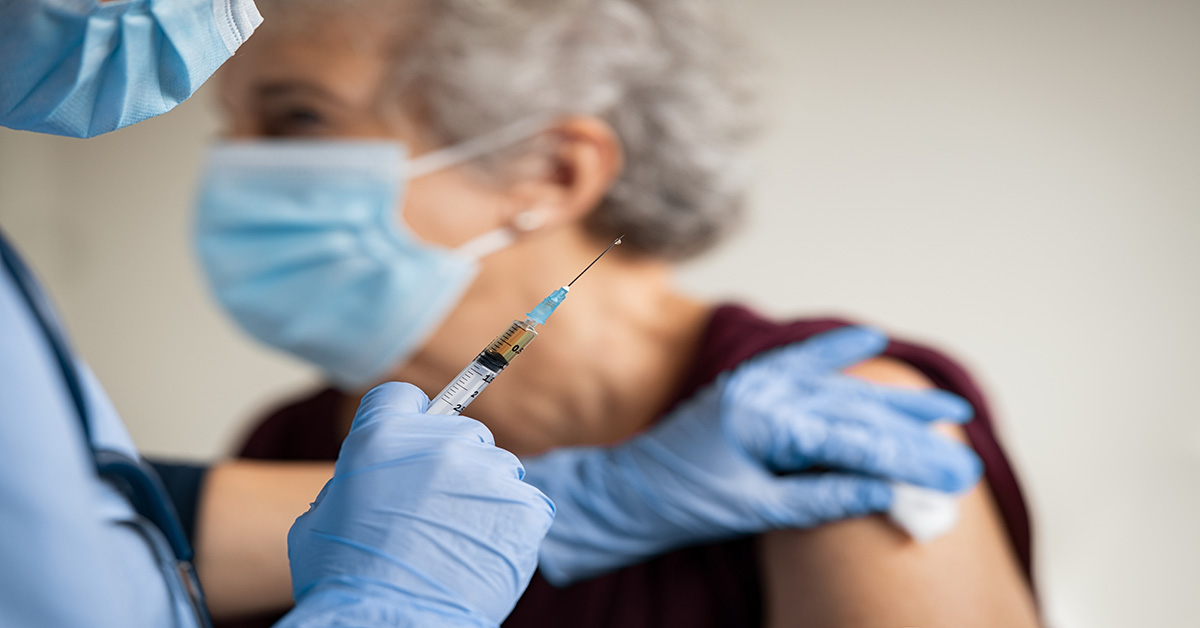
With rare exceptions, the U.S. Centers for Disease Control and Prevention (CDC) recommends that every person 6-months-old or older get a flu shot each year between October and March.
Getting a flu shot this flu season is even more important than usual, as vaccinating ourselves could reduce the burden on our nation’s healthcare workers who are currently contending with a greater number of hospitalizations from the novel coronavirus. According to the CDC,
“Getting a flu vaccine is more important than ever during 2020-2021 to protect yourself and the people around you from flu, and to help reduce the strain on healthcare systems responding to the COVID-19 pandemic.”
In early January, the United States shattered its previous COVID-19 hospitalizations record, with more than 130,000 Americans hospitalized due to the disease. During the initial wave of coronavirus infections in April 2020, peak hospitalizations fell just short of 70,000.
Currently, the CDC estimates that COVID-19 hospitalizations could peak at around 150,000. Some hard-hit hospitals, like those in Los Angeles County, are already experiencing bed shortages. With only 925,000 staffed hospital beds nationwide, the healthcare system continues to shoulder a significant burden, teetering on the edge of being overwhelmed.
Given these unprecedented circumstances, every person who gets a flu shot will be doing their part in helping to keep hospital beds open and hospital staff available to support patients battling COVID-19.
2020 may now be over, but it’s still not too late to get a flu shot. Flu season peaks between December and February but can often extend into April and even May.
Older Americans Are at Higher Risk
According to data compiled by the CDC, adults aged 65 and older make up more than 40 percent of all COVID-19 hospitalizations and between 50-70 percent of all flu-related hospitalizations.
Those with compromised respiratory systems, such as lung cancer and mesothelioma patients, must be especially vigilant about taking precautions to protect themselves against infection.
Mesothelioma is a deadly cancer caused by asbestos exposure. Though the CDC generally advises cancer patients to get a flu shot, patients living with mesothelioma should first consult their medical team to determine if the vaccine will interfere with their cancer treatment.
To lower the risk of transmitting either the flu or COVID-19 to mesothelioma patients, the CDC recommends that loved ones and caregivers should also receive a flu shot as soon as possible.
Signs of the Seasonal Flu May Mask Pleural Mesothelioma Symptoms
One of the cruelest things about pleural mesothelioma is its initial signs and symptoms, which are often mistaken for something else, such as the flu or common cold. Folks who experience cold-like symptoms may not be inclined to head to the doctors right away — a critical mistake that could allow mesothelioma to further develop and spread throughout the body.
This all-too-common scenario is heartbreaking, but it makes sense: It can take anywhere from 10-50 years after exposure to asbestos for the symptoms of mesothelioma to present. When decades have passed between exposure and the development of symptoms, one’s past asbestos exposure is not usually at the forefront of one’s mind.
Often, when mesothelioma symptoms do appear, the cancer has already advanced into its later stages. The disease’s long latency period is one of several factors that make mesothelioma difficult to diagnose.
Speak With Your Doctor About Your Asbestos Exposure History
Each year, around 3,000 new cases of mesothelioma are diagnosed in the United States, making the cancer exceptionally rare. This is why it’s important to talk to your doctor about getting the COVID and flu vaccines, along with your symptoms and asbestos exposure history.
Typically, mesothelioma is diagnosed after multiple imaging tests and biopsies. That said, if a patient knows that they have or may have been exposed to asbestos, it is vital they share this information with their doctor.
When a patient speaks with their doctor about their potential asbestos exposure history, this information can provide the doctor with the necessary context to help them determine when more testing may be needed.
Doctors can then order the right imaging tests, such as an X-ray or PET/CAT scan, to see if there is evidence of pleural effusion or tumors.
Given their work histories, certain Americans are at a greater risk for developing mesothelioma, including:
- Workers who were directly employed in asbestos occupations and their immediate family members
- U.S. veterans of all branches of the military, who account for roughly 30 percent of all mesothelioma cases
People in these high-risk groups need to discuss their potential asbestos exposure with their doctors and medical teams.
Don’t Wait – Get a Flu Shot Today!
The unprecedented burden that the COVID-19 pandemic has been putting on the United States’ healthcare system makes getting a flu shot all the more important in winter 2021.
Use the CDC’s tool, VaccineFinder, to see where flu shots are available near you.
For those who wish to learn more about the cause and symptoms of mesothelioma, and/or legal options surrounding mesothelioma, our website serves as a valuable resource for patients and their loved ones.




